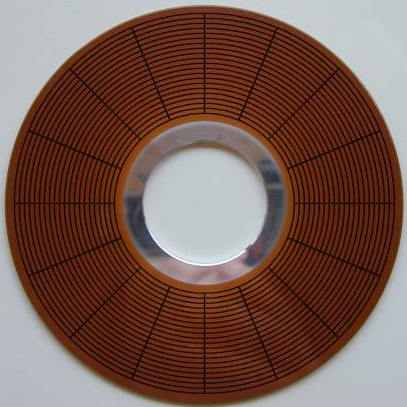All information stored on a hard disk is recorded in tracks, which are concentric circles placed on the surface of each platter, much like the annual rings of a tree. The tracks are numbered, starting from zero, starting at the outside of the platter and increasing as you go in. A modern hard disk has tens of thousands of tracks on each platter.
 |
| A platter from a 5.25″ hard disk, with 20 concentric tracks drawn over the surface. Each track is divided into 16 imaginary sectors. |
Data is accessed by moving the heads from the inner to the outer part of the disk, driven by the head actuator. This organization of data allows for easy access to any part of the disk, which is why disks are called random access storage devices.
Each track can hold many thousands of bytes of data. It would be wasteful to make a track the smallest unit of storage on the disk, since this would mean small files wasted a large amount of space. Therefore, each track is broken into smaller units called sectors. Each sector holds 512 bytes of user data, plus as many as a few dozen additional bytes used for internal drive control and for error detection and correction.
| The PC Guide Site Version: 2.2.0 – Version Date: April 17, 2001 © Copyright 1997-2004 Charles M. Kozierok. All Rights Reserved. |
This is an archive of Charles M. Kozierok’s PCGuide (pcguide.com) which disappeared from the internet in 2018. We wanted to preserve Charles M. Kozierok’s knowledge about computers and are permanently hosting a selection of important pages from PCGuide.
